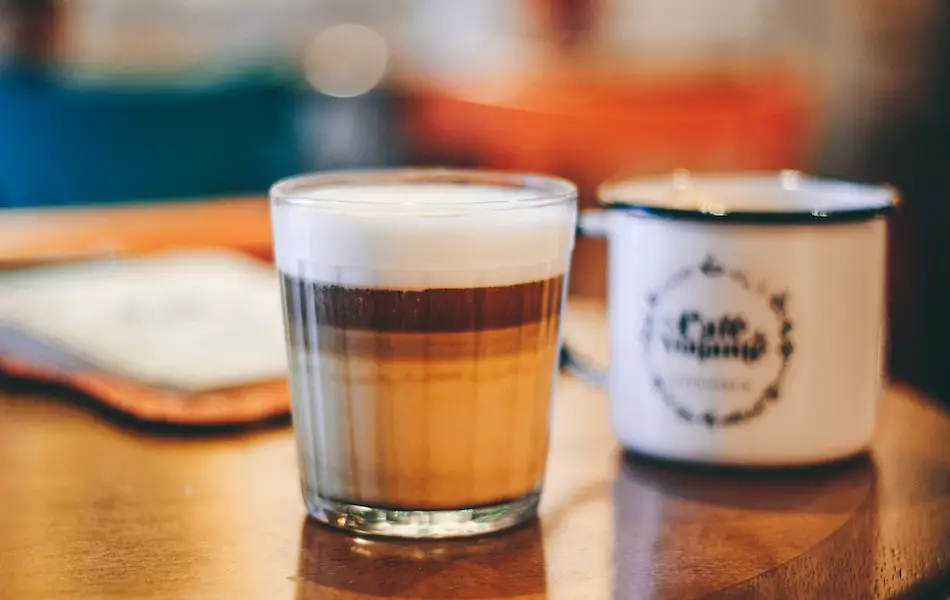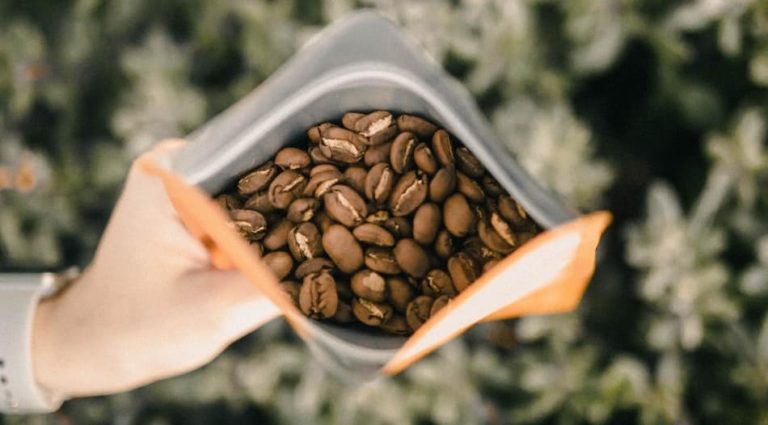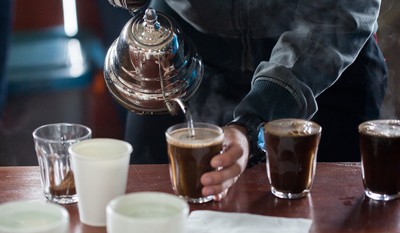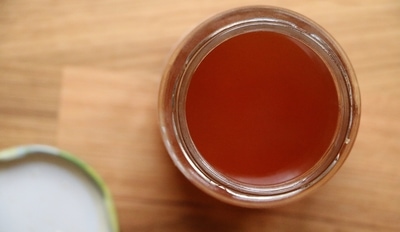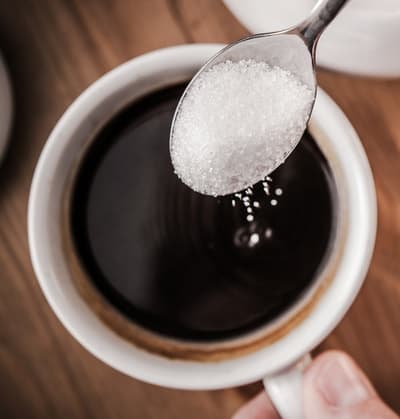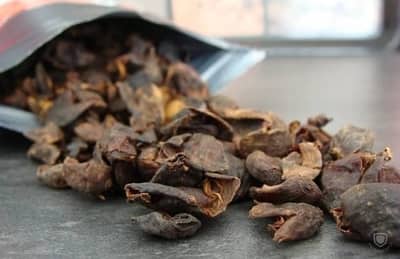Coffee vs Latte
There’s nothing like stepping into a coffee shop in the morning with the delicious aroma of freshly roasted beans to wake your senses and taste buds.
Coffee is traditionally consumed black or with a bit of sugar but has evolved into fancier versions with a taste twist, like lattes.
And what, do you ask, is the difference between regular coffee and lattes?
Coffee is brewed from coffee beans with nothing else added. Lattes are made with a layer of espresso coffee made from espresso beans, a layer of steamed milk, and a layer of frothy milk. Lattes contain more fat and sugar and are typically weaker than the typical brewed coffee.
There are many ways to incorporate the fresh aroma of coffee beans into your morning routine but if you’re interested in knowing the difference between coffee and lattes, keep on reading.
This article will step into the world of coffee, exploring the differences between regular brews and lattes.
Coffee vs Latte: The Difference

Coffee is an essential commodity in homes across the world, and among those coffee enthusiasts, there are different taste preferences when it comes to their caffeine fix.
Many coffee lovers awaken with the anticipation of that morning drip, with the delicious aroma filling their kitchen from freshly brewed coffee.
The scent alone can boost your energy and give you a sense of comfort as you take your first sip, letting the flavor dance around your taste buds.
Over the years, there have been many changes in how we prepare coffee, inviting more people to fall in love with coffee through modern creations, such as lattes.
The difference between coffee and lattes has to do with the preparation of the drink.
Traditional Coffee
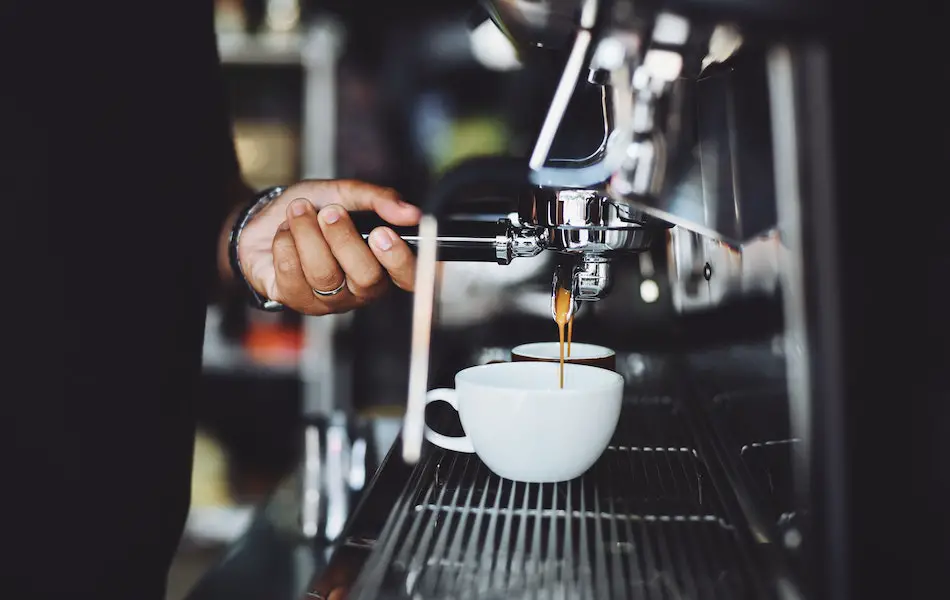
Coffee beans are roasted at varying degrees and times to achieve the desired texture and flavors.
They are then ground down to prepare for the brewing process.
During the brewing process, near-boiling water is poured over the coffee grounds and dripped into a cup or pot, ready to consume.
After it’s brewed, the coffee is served black, meaning nothing is added after the brewing process.
Depending on the brand you use, a typical cup of drip coffee typically offers a whopping 70 to 140 mg (0.002 to 0.004 oz) of caffeine per serving.
Traditionally, coffee has been served black, but, over the years, people have tweaked their cup of joe into a tastier version with sugar and milk – which leads to the latte!
Latte
Latte comes from the Italian term caffe latte, or caffè e latte, meaning “coffee and milk.”
Lattes aren’t the sweetest version of coffee available, but the milk sugars contribute to a slightly sweeter taste than the traditional black coffee.
These smooth-tasting coffee drinks are made with a double shot of espresso coffee, steamed milk, and milk froth (or foam).
Espresso coffee undergoes the most complex coffee-brewing method and originates in Italy.
During the brewing process, scalding water is pressurized through finely ground and compacted coffee.
It creates a bold, concentrated version of coffee for a caffeine kick.
Because espresso is a concentrated version of coffee in a small amount, it contains less caffeine, as explained in our guide: Which Coffee Has the Least Caffeine.
Espresso usually contains about 25 to 50 mg of caffeine, whereas traditional drip coffee typically offers a whopping 70 to 140 mg of caffeine per serving.
So, lattes generally have less caffeine than traditionally brewed coffee, depending on how many shots of espresso are added.
If you order a triple shot of espresso with your latte, it will be closer to the caffeine equivalent of one cup of coffee.
Using milk to make lattes adds milk fats and sugars, which contributes to the slight sweetness of the latte taste.
Modern practices within coffee shops include getting creative by adding frothy art on the surface of your latte – a tasty drink with a stunning first impression!
So, not only does the aroma and taste bring a warm smile to your face, but the appealing visual will as well. It adds a nice personal touch to this already delightful beverage.
The Pros and Cons of Drip Coffee
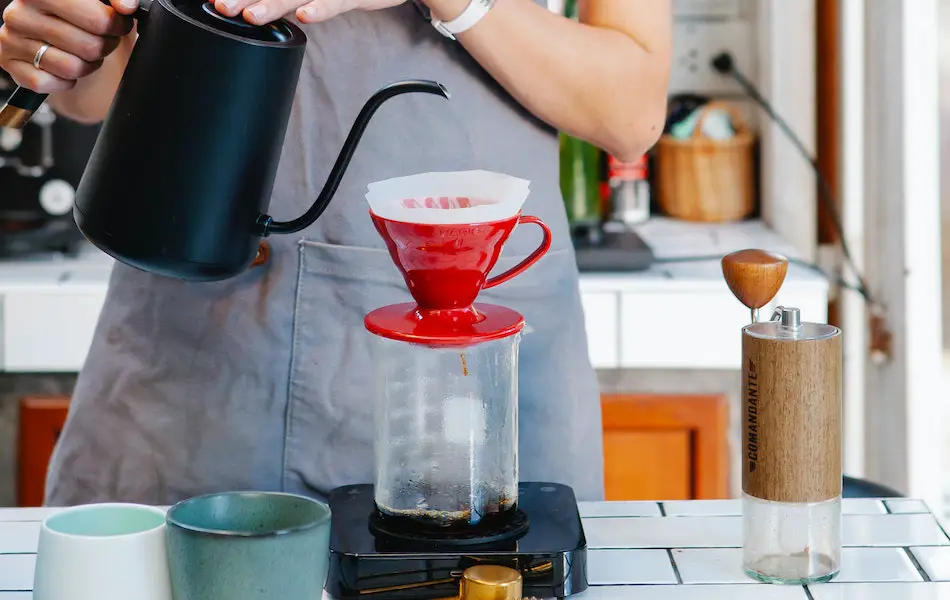
The following are the pros of regular drip coffee:
- Typically more caffeine per serving.
- Ideal for those that enjoy experiencing the unique, natural blend of flavors the coffee bean offers.
- You can add your own ingredients to complement the natural coffee flavor and your taste buds.
- It’s generally cheaper than the extravagant versions of coffee from your local coffee shop.
- Easy to brew at home.
- Studies have shown caffeinated black coffee is healthy to consume in moderation due to being rich in antioxidants, vitamin B2, and magnesium.
Here are the following cons of drip coffee:
- For home brewing, you’ll need a coffee machine, french press, or slow dripper.
- It can have a bitter taste that isn’t appealing to some people.
The Pros and Cons of Lattes
Here are the following pros of latte coffee:
- The taste caters to those that prefer their coffee slightly sweeter with milk.
- You can make them at home or buy them at your local coffee shop.
- Many coffee shops add a personal touch with an attractive image made with milk foam.
- The addition of milk adds calcium to your morning brew.
The cons of lattes are the following:
- Typically has less caffeine than a serving of regular coffee.
- It contains more fat and sugar due to the milk.
- It can be costly if purchased at a coffee shop.
- Latte coffee machines are more expensive than regular coffee machines.
How Coffee Came to Be and How It Has Evolved

A legend in history suggests coffee beans were first discovered centuries ago by a goat herder who noticed his goats becoming energetic after eating the berries from the coffee plant.
However, we know from documentation coffee was widely cultivated on the Arabian peninsula and added to the market of traded goods by the 15th century.
Now, coffee is cultivated in over 70 countries, and unroasted coffee is one of the most traded commodities overall.
Did you know coffee isn’t actually a bean at all?
Coffee plants are small shrubs or bushes that produce brightly colored red fruit called coffee cherries. Inside these coffee cherries are seeds or pits, which we now refer to as “coffee beans”.
The fruit itself is nutritious with antioxidants and can be dried and used for coffee cherry tea.
They were referred to as coffee “beans” because of the seed’s resemblance to beans.
Coffee beans are actually greenish in color when removed from the fruit. They are then roasted to bring out the natural and bold flavors this seed has to offer.
After going through a roasting process, the beans (or seeds, rather) are ground down to create an energetic and delicious drink when hot water is added.
The following are the four main types of coffee beans:
- Arabica: The most common and well-known type of coffee on the market is the Arabica coffee beans. They make up about 60% of the world’s coffee and originate in Arabia, present-day Yemen. Arabica beans have a smooth and complex flavor and are offered by many gourmet brands due to their high quality.
- Robusta: Primarily grown in Africa and Indonesia, Robusta beans are less expensive than their higher-quality Arabica counterparts, making them more affordable for coffee lovers to enjoy. This bean contains significantly more caffeine than Arabica beans and has a harsh and bitter taste that may not be welcome in all coffee cups.
- Liberica: Deriving from Liberia, this Liberian coffee bean offers a bold, nutty, and smokey taste with floral and spicy undertones. The caffeine level of these beans is lower than the other three beans listed but can be pricier due to a limited supply on a global level. Most coffee enthusiasts either adore it or hate it, and some say there’s no in-between.
- Excelsa: This bean is a variant of the liberica bean and is cultivated in Southeast Asia. It has a light scent with fruity flavors and usually has lower levels of caffeine. They are commonly added to coffee blends, creating a unique taste twist.
Along with the different types of beans, there are different roast lengths to achieve the desired flavor and texture.
Even though coffee beans lose density the longer they roast, the caffeine amount is virtually the same for each roast.
The typical specialty roasts available include the following:
- Light roast: If you want to experience the best flavor, light roasts offer a complex punch of flavors to wow your taste buds. The roasting process is shorter to bring out the natural, unique flavors of the coffee seed. And with the shorter roasting process, the bean retains more density and size.
- Medium roast: A medium roast has balanced flavors with a roasting time between light and dark roasts. As with light roast, medium roast isn’t roasted long enough to extract the natural oils from the coffee beans and will retain most of its natural flavors. The size and density of the beans are in between light and dark roasted beans.
- Dark roast: The roasting process is longer, replacing most of the natural flavors with the rich taste of the roasting process. The longer the beans roast, the sugars become caramelized, and the oils are released, creating a blend of sweet, toasty, and even chocolatey flavor. Because of longer roasting times, the density of the beans lessens, leaving smaller-sized coffee beans.
The following are the three forms in which you can purchase your desired coffee at your local grocer:
- Whole bean: Many coffee lovers enjoy grinding their own beans for the fresh taste and aroma. To utilize whole beans for coffee, you’ll need a coffee mill or grinder. The price for whole beans does not typically differ from already ground coffee beans.
- Ground: Ground coffee beans have already been through the bean grinding process and package, allowing you to just add the preferred amount to your coffee machine or dripper.
- Instant: This type of coffee is excellent for the on-the-go person that still wants to enjoy their morning cup. The coffee is already brewed and undergoes processing and packaging. Just add hot water, stir and enjoy!
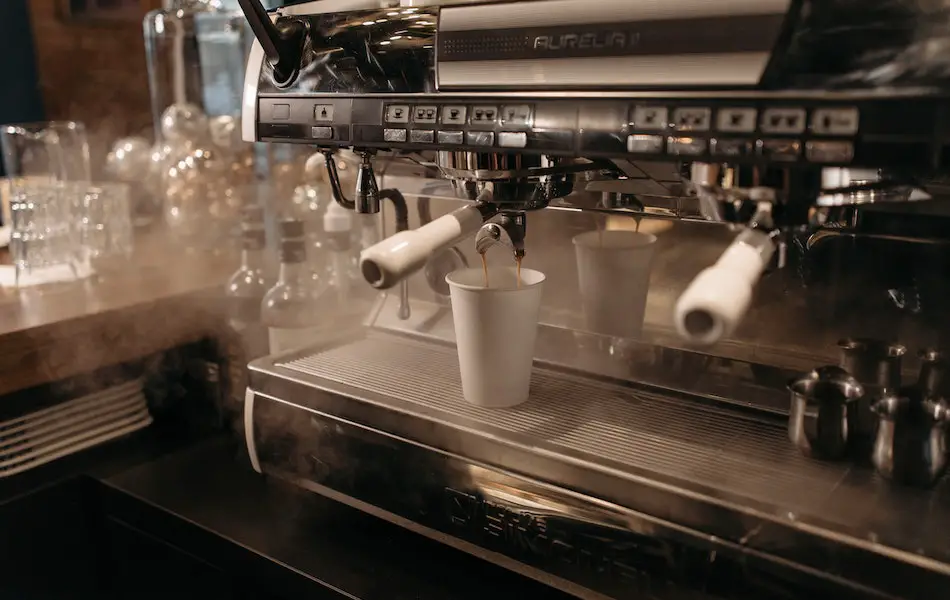
There are now many varieties of coffee offered, surrounding the creative influence of modern coffee cultures providing tastier versions with some loaded with sugary goodness.
The following are different ways to get your coffee fix, depending on the preference of your taste buds:
- Black: Traditional brew without anything doctoring the taste.
- Latte: Contains espresso, steamed milk, and milk foam.
- Cappuccino: Essentially, cappuccinos are a latte with extra steamed milk and foam, garnished with cocoa or cinnamon powder.
- Mocha: If you’re a chocolate lover, you may fall for the infamous mocha that’s made with chocolate, espresso, and milk (steamed and foamed).
- Americano: An espresso shot that is diluted with water.
- Cortado: A delightful balance of espresso and warm steamed milk.
- Red Eye: It’s fully equipped to give you that caffeine kick from a shot of espresso mixed into a regular cup of coffee.
- Galão: A relative to the latte and cappuccino, this coffee drink is similarly made but has twice as much foamed milk, creating a lighter beverage to consume.
- Macchiato: This coffee drink contains a base of espresso with a little bit of milk foam on top.
If you’re interested in learning more about the sweet side of coffee drinks, like some of the drinks mentioned above, check out our other post: The 8 Sweetest Coffees to Satisfy Your Sweet Tooth.
The coffee creations mentioned in this article are enough to make anyone’s mouth water.
And if you’ve never experienced Vietnamese iced coffee that’s listed as one of the eight, you are truly missing out!
Conclusion
The coffee vs. latte debate comes down to how they’re made and your taste preference. Coffee is brewed by pouring hot water over coffee grounds and served as is.
Lattes have layers that consist of a shot or shots of a concentrated form of coffee (called espresso), steamed milk, and milk foam.
So, regular coffee may be your go-to if you’re satisfied with the traditional coffee flavors to wake you in the morning.
However, if you’re looking to take your taste buds to the next level, consider trying lattes enhanced by the rich flavor of espresso and milk.

